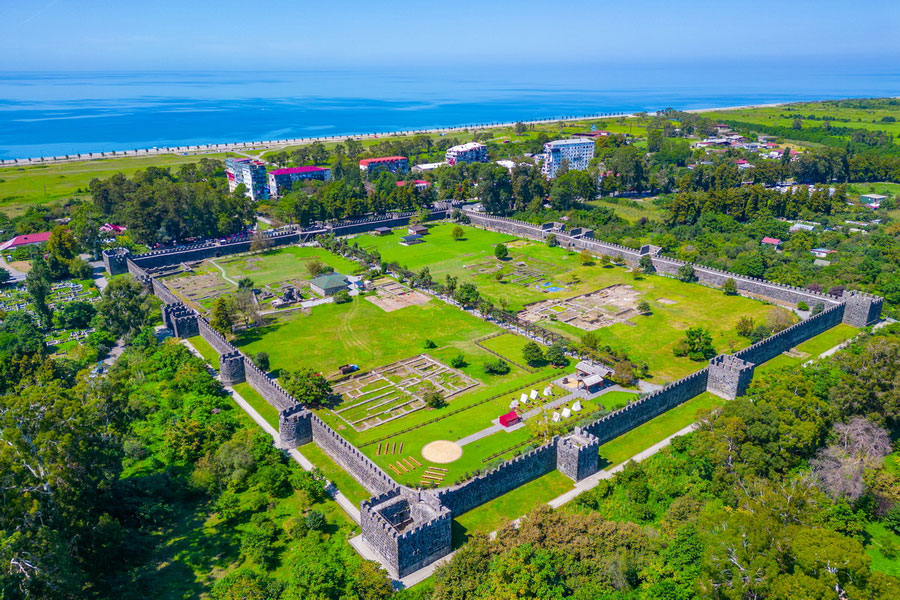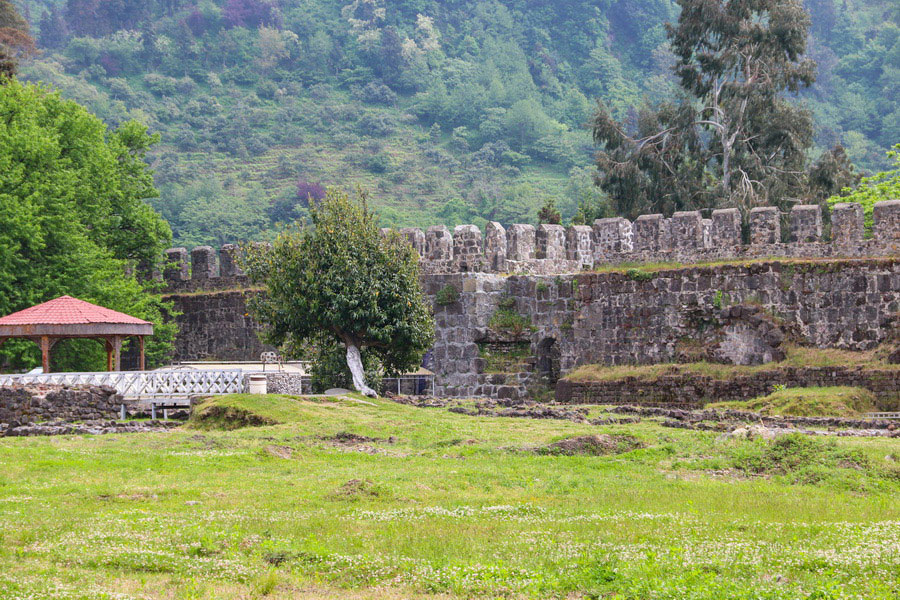
Hours: 11am- 5pm, Sun-Sat
Gonio Fortress near Batumi, also known as Gonio-Apsaros Fortress, is the oldest citadel in the country of Georgia whose formation dates back to the Roman Empire. Occupying 4.5 hectares (over 11 acres) near the city of Batumi in Adjara Region, Gonio Fortress is regarded as a rare and vital link to Georgia’s ancient past.
History
Archeological layers uncovered at Gonio Fortress indicate that it was built by the Romans in the 1st century AD. It then fell under Byzantine rule before being captured by the Ottoman Turks in 1547. Gonio Fortress remained under Turkish control until 1878 when, in accordance with the Treaty of San Stefano, the whole of Adjara was placed under the protectorate of the Russian Empire. During Soviet times, Adjara was declared an autonomous republic, a status which it has retained to this day.
Gonio Fortress was originally built to protect the entries to the Chorokhi and Acharistskali Rivers, a strategic point which connected the land’s inner regions with the Black Sea shore. Straddling the eastern border of the Roman Empire, the outpost also served as an economic and cultural center, a fact confirmed by the ruins of a hippodrome and Roman theatre which were uncovered on site and dated to the 1st-3rd centuries AD. During the Byzantine era, it likewise served as a trade center for Genoese merchants.
Despite all that is known regarding its history, Gonio Fortress is still fraught with mystery. Ongoing excavations continue to uncover clues to the citadel’s past, such as buried treasure dating back to the 5th century AD which was discovered near the southern wall in 1974. Due to the significance of Gonio Fortress as a rare monument from the Roman period of Adjara’s history, it was declared a museum-reserve by the Georgian government in 1994.
Legends

Gonio-Apsaros Fortress is surrounded with legend, and the name Apsaros often associated with Greek mythology. According to one story, Absyrtus sone of King Aet was killed by Jason of Argonauts and buried on the site of Gonio Fortress.
The fortress territory also has a tomb which some claim is the burial site of the Apostle Matthew, the twelfth disciple of Jesus who was accepted into Christ’s inner circle in place of Judas Iscariot. Matthew purportedly traveled to the land after Christ’s death in order to preach and remained here until his death. Today, large cross-stone pedestals stand on the site presumed to be Matthew’s tomb.
Architecture
Gonio Fortress is encompassed by a wall measuring 900 meters in length and 5 meters in height. Initially, twenty-two 7-meter-high towers were built along its perimeter, but only eighteen have remained to the present day. Originally built with 4 entrances and exits, currently only the western entry has survived.
The layout and architecture of Gonio Fortress near Batumi have remained nearly unchanged through millennia, and save the addition of a mosque opposite Saint Mathew’s Tomb and the reconstruction of a section of the Roman bathhouse, it has largely retained its original appearance. The site now also includes a small museum.
A visit to Gonio Fortress, located approximately 15 kilometers from Batumi in a village named after the fortress, is highly recommended for anyone visiting Batumi, Georgia.

